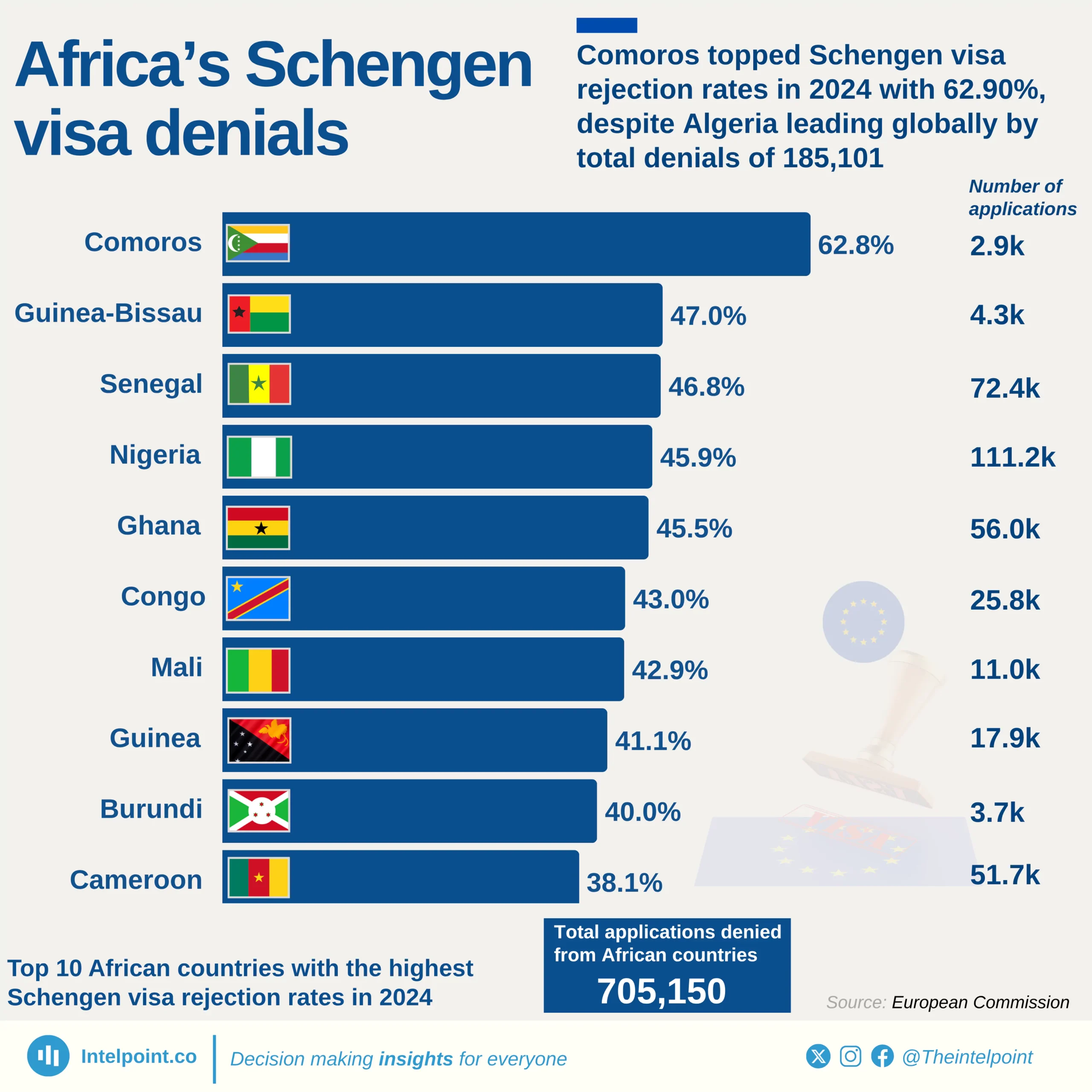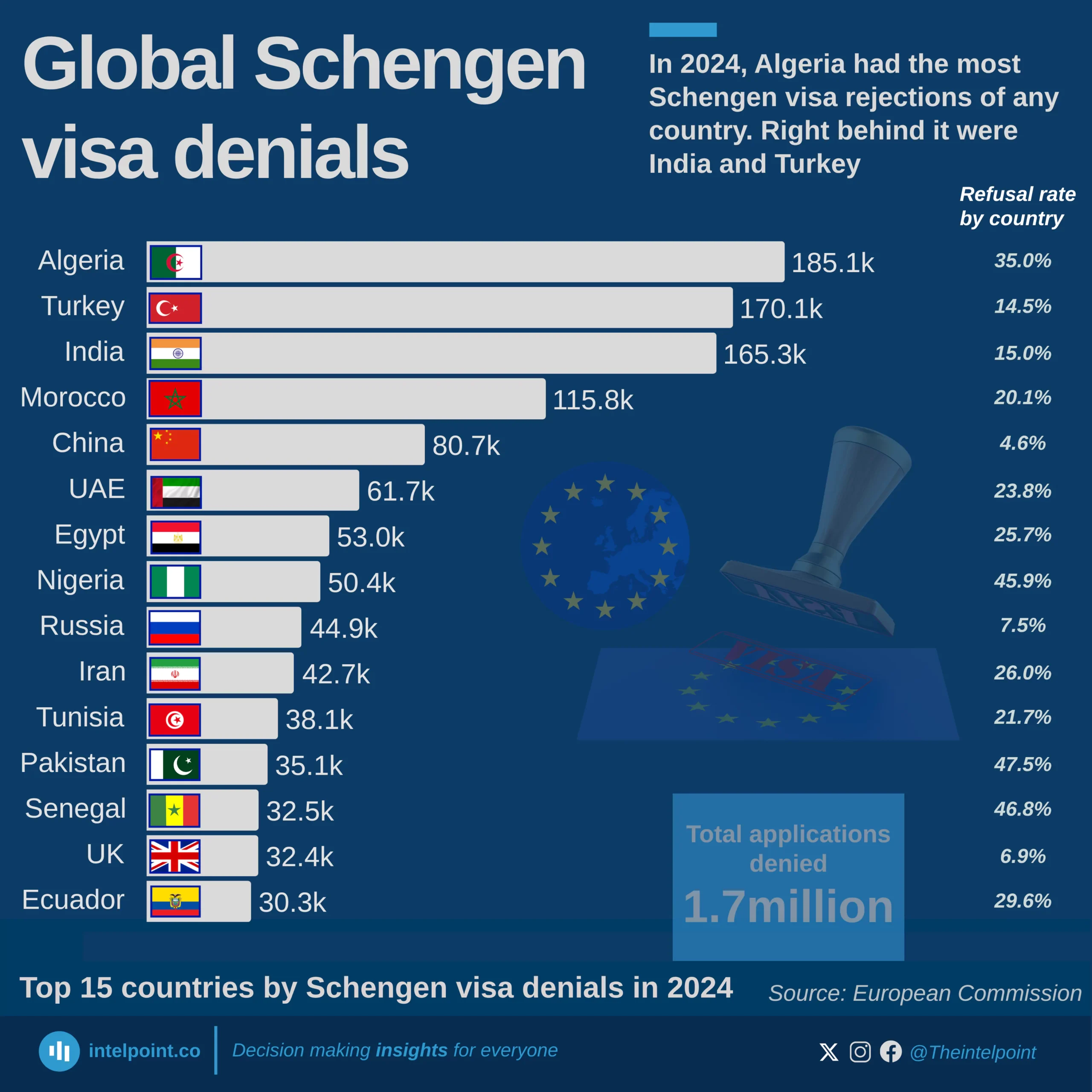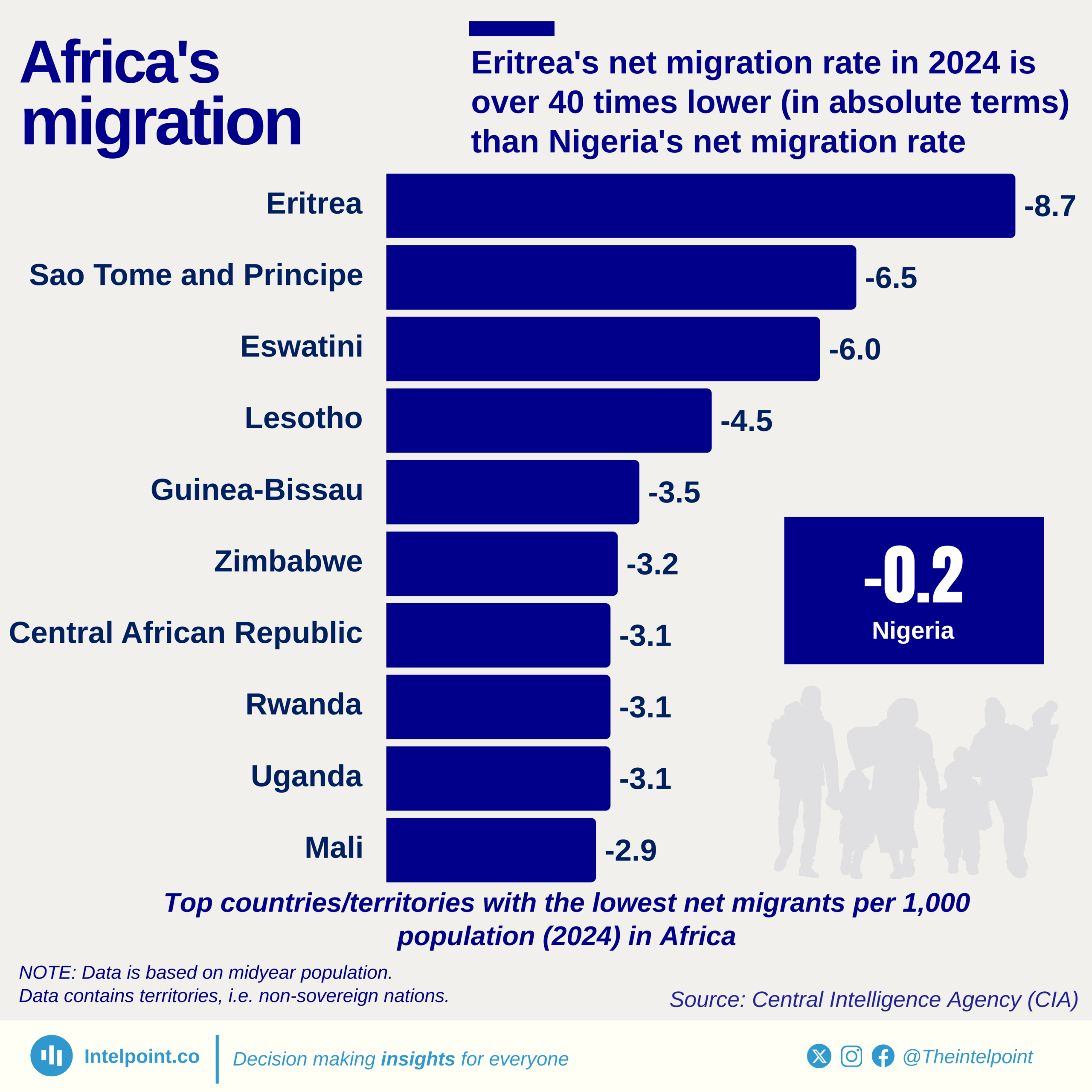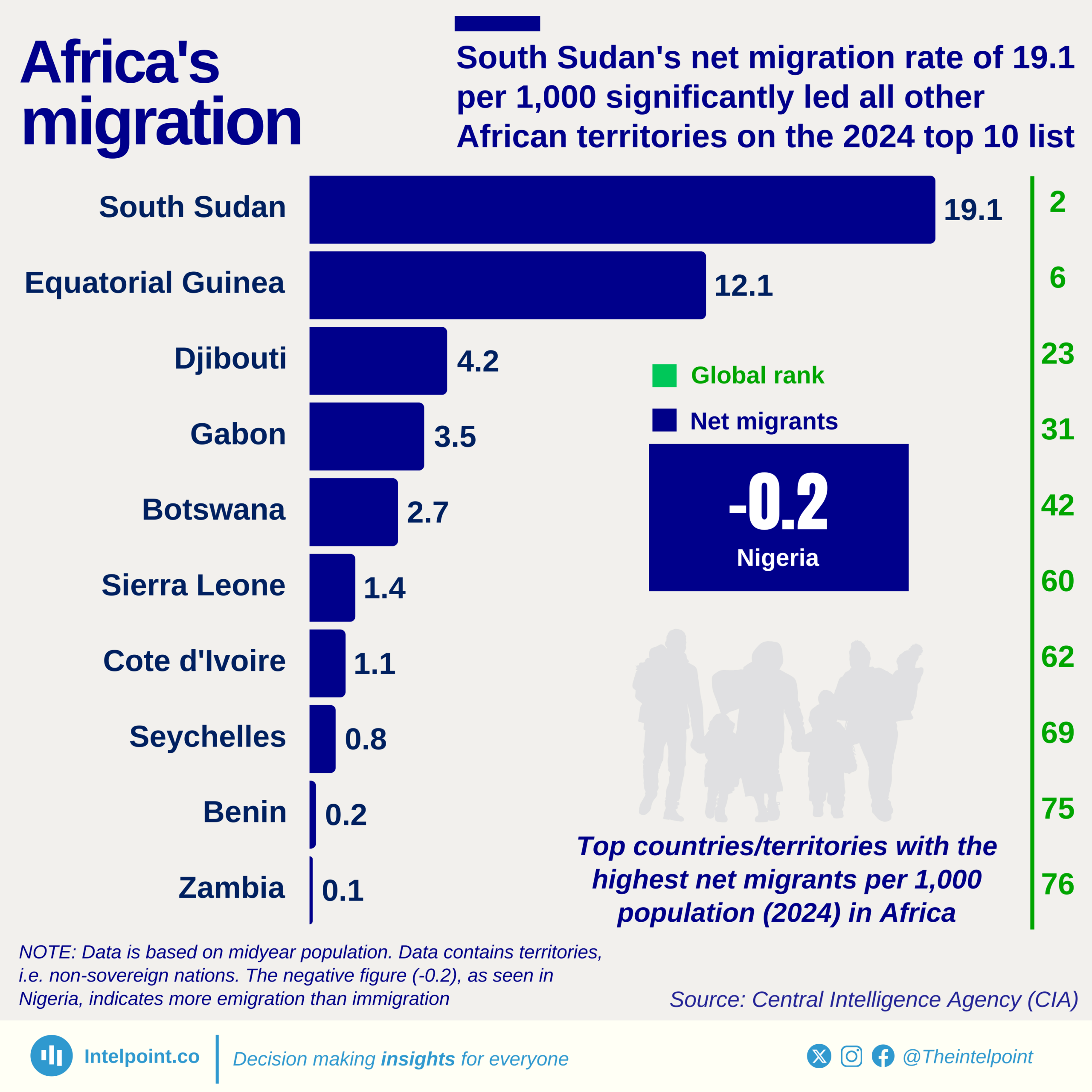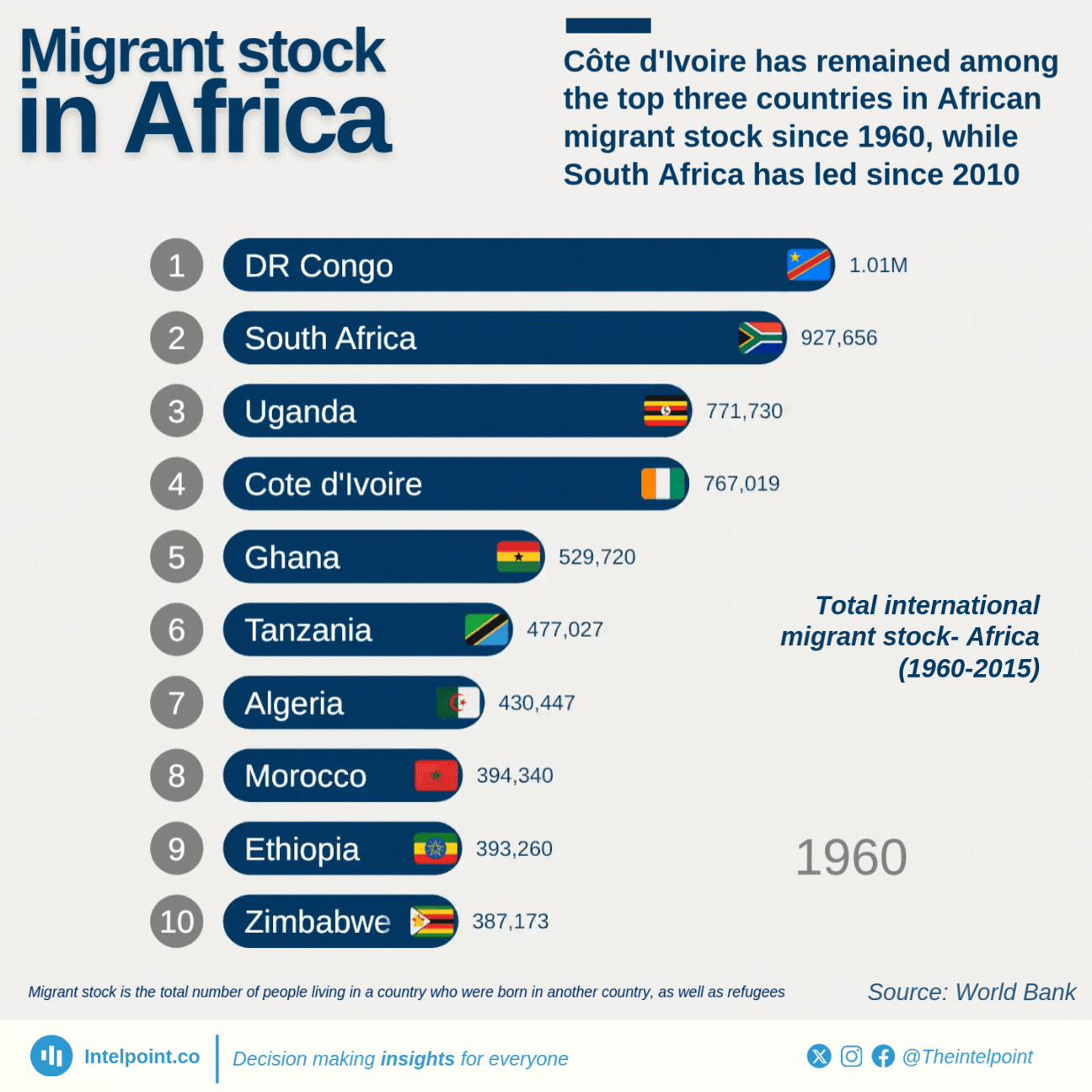Key takeaways:
In 2012, the United States granted refuge to 262,006 individuals under the mandate of the United Nations High Commissioner for Refugees (UNHCR). The early years showed modest increases, with the number growing to 267,214 by 2014. By 2017, the refugee count rose to 287,135, reflecting a 9.9% increase from 2012.
A significant shift occurred between 2017 and 2019 when the refugee population under UNHCR's mandate increased substantially to 341,715. The period of the COVID-19 pandemic (2020-2021) recorded a slight decline in the number of refugees, with numbers stabilising around 340,000. However, this decline was temporary as 2022 and 2023 recorded an increase of about 70,000 combined. The refugee population reached 435,333 by the end of 2024, the highest number recorded in the United States from 2012 to 2024.

Comoros leads with a striking 62.8% rejection rate, the highest not just among African consulates, but also the global consulate countries
Guinea-Bissau, Senegal, and Nigeria follow with rejection shares between 45% and 47%.
Despite having one of the highest total visa rejections globally, Algeria does not appear in this chart, as its rejection share is comparatively lower.
Countries with smaller applicant pools tend to have higher rejection rates, shedding light on access disparities and approval scrutiny in consulate processes.
